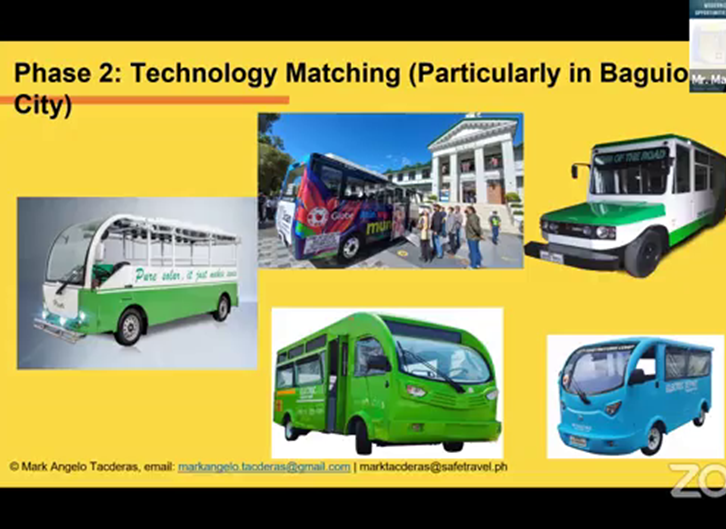Transit Advertising Philippines: A Cutting-edge Means to Market
Transit Advertising Philippines: A Cutting-edge Means to Market
Blog Article
A Thorough Exam of the Strategies and Techniques for Effective Transit Marketing Campaigns
Transit advertising and marketing campaigns supply a special chance for brand names to involve with diverse target markets in dynamic settings. As we explore these critical elements, it becomes clear that the course to an impactful transportation advertising approach is both gratifying and intricate, increasing the question of how finest to browse these intricacies for maximum brand name visibility.
Comprehending Target Demographics
Recognizing target demographics is crucial for the success of transportation advertising and marketing projects (Transit Advertising Philippines). Identifying details audience sections allows advertisers to tailor their messages successfully, making sure that the content resonates with the desired visitors. This method boosts interaction and makes the most of return on investment
To properly assess target demographics, marketing experts have to think about numerous crucial variables, including age, earnings line of work, way of living, and degree preferences. As an example, a project aimed at young specialists may focus on convenience and modernity, while one targeting families may highlight security and dependability. In addition, geographical variables such as city versus country setups can significantly affect customer actions and choices.
Information collection techniques such as studies, focus groups, and social media sites analytics give beneficial understandings right into market trends and consumer habits. By leveraging this details, marketers can craft compelling narratives that align with the worths and requirements of their target audience.
Ultimately, comprehending target demographics not only educates the critical direction of transit ad campaign however also ensures that sources are designated efficiently. This targeted approach raises the probability of accomplishing campaign purposes, promoting brand name commitment, and driving conversions.
Imaginative Layout Strategies
Reliable communication with target demographics relies heavily on ingenious creative design strategies in transportation ad campaign. To effectively catch focus in a crowded aesthetic atmosphere, developers need to prioritize quality and visual influence. Using high-contrast components and strong shades can enhance presence, making sure that messages are easily readable from a distance.
Incorporating dynamic images that reverberates with the target audience is vital. Visual storytelling methods can stimulate emotions and develop memorable associations with the brand name. Moreover, calculated use typography helps communicate essential information rapidly; proper sizes and understandable typefaces additionally boost readability.
Including interactive elements, such as QR codes or augmented reality features, can involve commuters beyond passive observation (Transit Advertising Philippines). These strategies not just advertise individual interaction however additionally link the void in between typical marketing and digital interaction
Furthermore, using area creatively-- whether on bus wraps, transportation sanctuaries, or metro advertisements-- can cause ingenious designs that break the mold of standard advertising and marketing. By welcoming imaginative imagination while preserving brand uniformity, projects can promote a strong connection with their target market, eventually driving both understanding and action. The integration of these design strategies is paramount for attaining successful transit advertising and marketing results.
Strategic Positioning Approaches
Optimizing the effect of transportation marketing depends upon strategic positioning approaches that make sure ideal visibility and involvement. Efficient positioning includes understanding and examining high-traffic areas guest demographics to identify one of the most beneficial areas for ad display screens. As an example, placing ads near entries and departures of transportation cars can record the interest of boarding and touching down passengers, hence enhancing direct exposure.
Moreover, using both exterior and interior surfaces of transportation vehicles can substantially broaden reach. Exterior advertisements, noticeable during commutes, involve pedestrians and other vehicle drivers, while interior ads target guests in a captive environment. In addition, placing ads in transportation centers, such as bus terminals or train stations, enables for raised impressions as commuters shift in between various modes of transportation.
Timing is additionally essential; lining up the campaign launch with peak travel periods takes full advantage of target market interaction - Transit Advertising Philippines. Furthermore, leveraging digital displays en route environments can help with dynamic material, enhancing and offering real-time updates individual communication. By using these critical positioning approaches, marketers can make sure that their transportation ad campaign accomplish optimal exposure, resonate with the target audience, and eventually drive preferred results

Determining Project Efficiency
To examine the success of transit ad campaign, it is vital to utilize a variety of measurement strategies that give understandings into audience engagement and total performance. One main technique is making use of key efficiency signs (KPIs), such as reach, perceptions, and engagement prices, which evaluate the number of people watched the ad and communicated with it.
Studies and emphasis groups can likewise be critical in evaluating consumer assumptions and recall, enabling marketing experts to recognize the effect of their messaging. Additionally, have a peek at this website tracking internet site web traffic and social networks engagement throughout and after the campaign aids determine direct actions to the marketing.
Another efficient technique is making use of location-based analytics, which can offer information on foot website traffic around particular transportation locations, using insights into whether the project effectively recorded the attention of commuters. Furthermore, assessing sales information can disclose correlations between transportation advertising and boosted revenue, supplying tangible evidence of a project's performance.
Study of Success
Understanding the performance of transportation advertising projects with dimension methods lays the foundation for analyzing real-world examples that show effective end results. By using geo-targeted digital ads and analytics, the brand name determined a 30% boost in sales in regions where the covers were plainly shown, demonstrating the straight effect of transit marketing.
One more engaging instance originates from a neighborhood not-for-profit company that released a campaign on train systems to promote a neighborhood event. The organization incorporated vivid visuals with QR codes guiding commuters to a registration page. Post-campaign evaluation disclosed a 50% rise in event participation contrasted to the previous year. Using direct interaction via innovation enhanced the campaign's reach and effectiveness.

Verdict
In summary, effective transit marketing campaign require a comprehensive strategy that incorporates an understanding of target demographics, cutting-edge style methods, and tactical placement. By prioritizing emotional engagement via strong visuals and optimizing visibility during peak traveling times, brands can significantly improve their impact. Furthermore, continuous dimension of project performance via vital performance indications and consumer responses makes certain constant improvement. Collectively, these methods foster brand name existence and make the web link most of the return on financial investment en route advertising efforts.
Comprehending target demographics is crucial for the success of transit advertising and marketing projects.Reliable interaction with target demographics depends heavily on innovative creative layout strategies in transit advertising campaigns. By employing these strategic positioning important source approaches, marketers can make certain that their transportation marketing campaigns attain optimal presence, resonate with the target audience, and inevitably drive preferred outcomes.
Understanding the performance of transit advertising projects with measurement strategies lays the groundwork for examining real-world instances that show effective results.In summary, effective transit advertising projects necessitate a comprehensive strategy that integrates an understanding of target demographics, innovative layout techniques, and tactical positioning.
Report this page